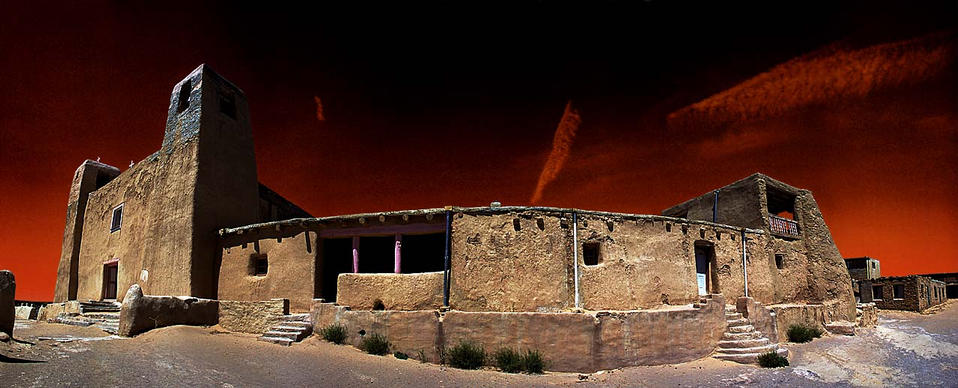The church has a fortress-like battered aesthetic. This is do somewhat to its age, but also due to its slanting exterior silhouette, the two bell towers flanking the entrance, and the projecting vigas from the roof. The large plain walls and the parapet wall also aid in this aesthetic. The dimensions of the church are 150 feet by 40 feet, with the main entrance facing east, a typical orientation for a Catholic church. Inside, the space has been described as, “cool, dim, and spacious, the walls whitened with gypsum”. The entrance is underneath a choir loft, and the end wall has a large carved and painted reredos over the altar. The ceiling has large transverse beams over 40 feet long and 14 inches square which rest on brackets inset in the adobe in the walls. Much of the interior atmosphere is due to the large adobe walls which the church consists of. These large thermal masses should provide adequate shielding from the intense summer sun, insulation during the winter, and contribute even further to the fortress-like feel of the church.

